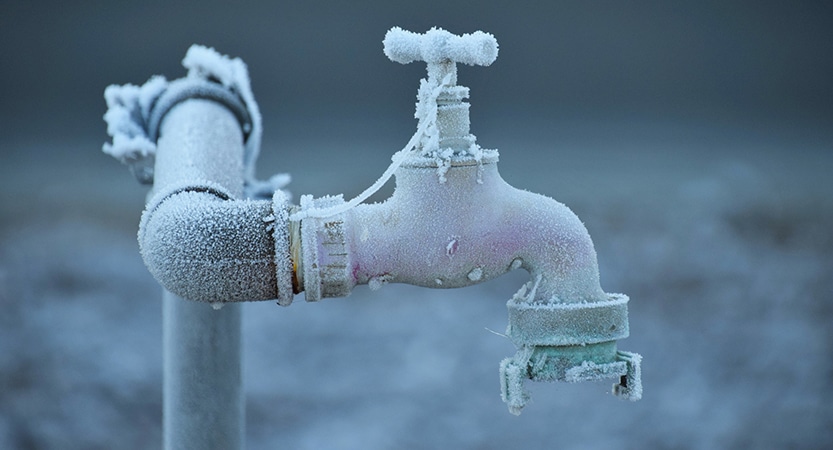Essential Advice to Prevent Frozen Pipes in Cold Weather: Expert Guidance
Essential Advice to Prevent Frozen Pipes in Cold Weather: Expert Guidance
Blog Article
We have encountered this post on Prevent Frozen Pipes down the page on the internet and believe it made perfect sense to write about it with you over here.

Cold weather can damage your plumbing, particularly by freezing pipes. Here's just how to prevent it from happening and what to do if it does.
Intro
As temperature levels drop, the threat of frozen pipes rises, possibly causing expensive repair work and water damage. Recognizing exactly how to prevent icy pipes is critical for house owners in cool environments.
Understanding Icy Pipelines
What triggers pipes to ice up?
Pipes ice up when revealed to temperatures below 32 ° F (0 ° C) for prolonged durations. As water inside the pipelines ices up, it expands, putting pressure on the pipe walls and potentially causing them to burst.
Threats and damages
Icy pipelines can result in water disruptions, residential property damages, and pricey repair work. Ruptured pipelines can flood homes and create comprehensive architectural damage.
Indicators of Frozen Piping
Recognizing frozen pipelines early can avoid them from bursting.
Exactly how to determine icy pipelines
Try to find reduced water flow from taps, unusual smells or noises from pipelines, and visible frost on revealed pipelines.
Avoidance Tips
Protecting vulnerable pipes
Cover pipes in insulation sleeves or utilize warmth tape to shield them from freezing temperature levels. Focus on pipes in unheated or external locations of the home.
Heating techniques
Maintain indoor spaces properly heated, specifically areas with pipes. Open closet doors to permit cozy air to circulate around pipelines under sinks.
Protecting Exterior Plumbing
Yard hoses and exterior faucets
Disconnect and drain pipes yard hose pipes before wintertime. Mount frost-proof spigots or cover outside taps with insulated caps.
What to Do If Your Pipelines Freeze
Immediate activities to take
If you think frozen pipelines, maintain faucets available to eliminate stress as the ice thaws. Use a hairdryer or towels soaked in hot water to thaw pipelines gradually.
Long-Term Solutions
Architectural changes
Consider rerouting pipelines far from outside walls or unheated areas. Add added insulation to attic rooms, basements, and crawl spaces.
Upgrading insulation
Invest in high-grade insulation for pipes, attics, and wall surfaces. Appropriate insulation aids maintain consistent temperatures and reduces the danger of frozen pipes.
Final thought
Stopping frozen pipelines needs aggressive measures and quick actions. By comprehending the reasons, indications, and preventive measures, homeowners can shield their plumbing throughout winter.
6 Proven Ways to Prevent Frozen Pipes and Protect Your Home
Disconnect and Drain Garden Hoses
Before winter arrives, start by disconnecting your garden hoses and draining any remaining water. Close the shut-off valves that supply outdoor hose bibs and leave the outdoor faucet open to allow any residual water to drain. For extra protection, consider using faucet covers throughout the colder months. It’s also important to drain water from any sprinkler supply lines following the manufacturer’s directions.
Insulate Exposed Pipes
Insulating your pipes is an effective way to prevent freezing. Pipe insulation is readily available at home improvement stores and is relatively inexpensive. Pay close attention to pipes in unheated areas such as the attic, basement, crawl spaces, or garage. Apply foam insulation generously to create a buffer against the cold. You can also wrap your pipes in heat tape or thermostat-controlled heat cables for added warmth.
Seal Air Leaks
Inspect your home for any cracks or openings that could let in cold air. Seal any holes around the piping in interior or exterior walls, as well as the sill plates where your home rests on its foundation. Additionally, make sure to keep your garage door closed unless you’re entering or exiting. Leaving it open creates a significant air leak that can lead to frozen pipes.
Allow Warm Air Circulation
During cold snaps, it’s essential to allow warm air to circulate evenly throughout your home. Leave interior doors ajar to promote better airflow. Open kitchen and bathroom cabinets to help distribute heat consistently around the rooms. If you have small children or pets, be sure to remove any household chemicals or potentially harmful cleaners from open cabinets for safety.
Let Faucets Drip
A small trickle of water can make a big difference in preventing ice formation inside your pipes. When temperatures drop significantly, start a drip of water from all faucets served by exposed pipes. This continuous flow helps prevent the water from freezing. Additionally, running a few faucets slightly can relieve pressure inside the pipes, reducing the chances of a rupture if the water inside does freeze.
https://choateshvac.com/6-proven-ways-to-prevent-frozen-pipes-and-protect-your-home/

Do you appreciate reading up on Prevent Frozen Pipes ? Put a review below. We will be delighted to listen to your ideas about this content. We are looking forward that you visit us again before long. Sharing is good. Who knows, you could be doing someone a favor. We appreciate your readership.
View More Report this page